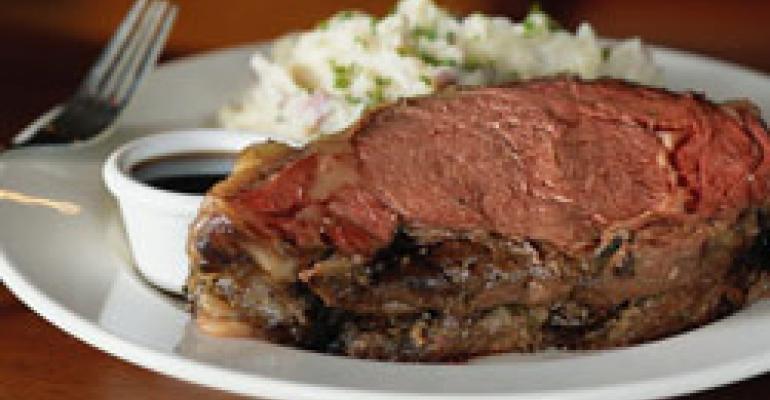Most shoppers will tell you that they’d like to lower their carbon footprint. There are many ways to do this, of course; consumers are driving fewer miles, using less electricity, purchasing carbon offsets, and more. When it comes to food choices, they have overwhelmingly shown their support for buying local. The shorter the distance something has to travel, the less fuel burned, the smaller the amount of carbon that’s pumped into the atmosphere.
There’s mounting evidence that shows local buying is only one part of the carbon equation. A study published last month in the journal Environmental Science & Technology names red meat and dairy as prime culprits, responsible for a combined 48% of all greenhouse gases attributable to food production. This is due to the energy-intensive process of feeding and housing cows, not to mention the gases they put out themselves. Making one day a week meat-free would be the carbon equivalent of driving 1,160 miles less per year, according to the researchers. A recent study by the Pew Commission on Industrial Farm Animal Production came to a similarly damning conclusion against conventional meat processing.
Consumers are starting to get wind of all this, mainly through books and news outlets. Next month, Houghton Mifflin will publish “The End of Food” by Paul Roberts, which focuses on incompatibilities in the modern food system, including meat production. National Public Radio recently aired a story about going beyond the local movement. And the Los Angeles Times just wrote about the cafeteria at California’s University of Redlands, which features a “low-carbon diet.”
“Raising beef is incredibly inefficient, and I think that people are becoming aware of it,” said Denis Ring, who helped develop Whole Foods’ “365” private label brand and now serves as president of retail consulting firm Bode International, in an interview.
Retailers: File all of this under “something to watch.” Local products are still going strong, and although there’s been a slowdown in meat production, the demand is still there. But just as reusable bags caught on, so too might this movement against a seemingly invulnerable category.


